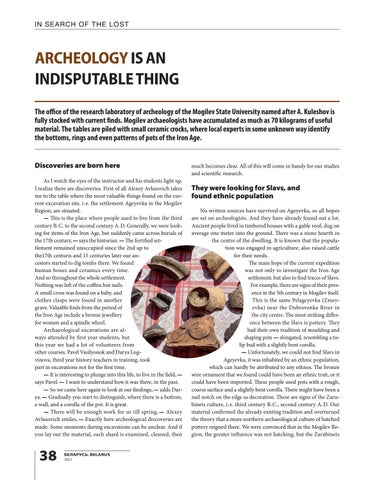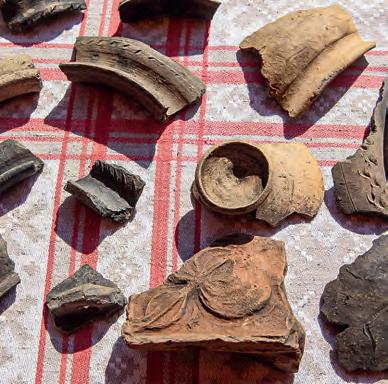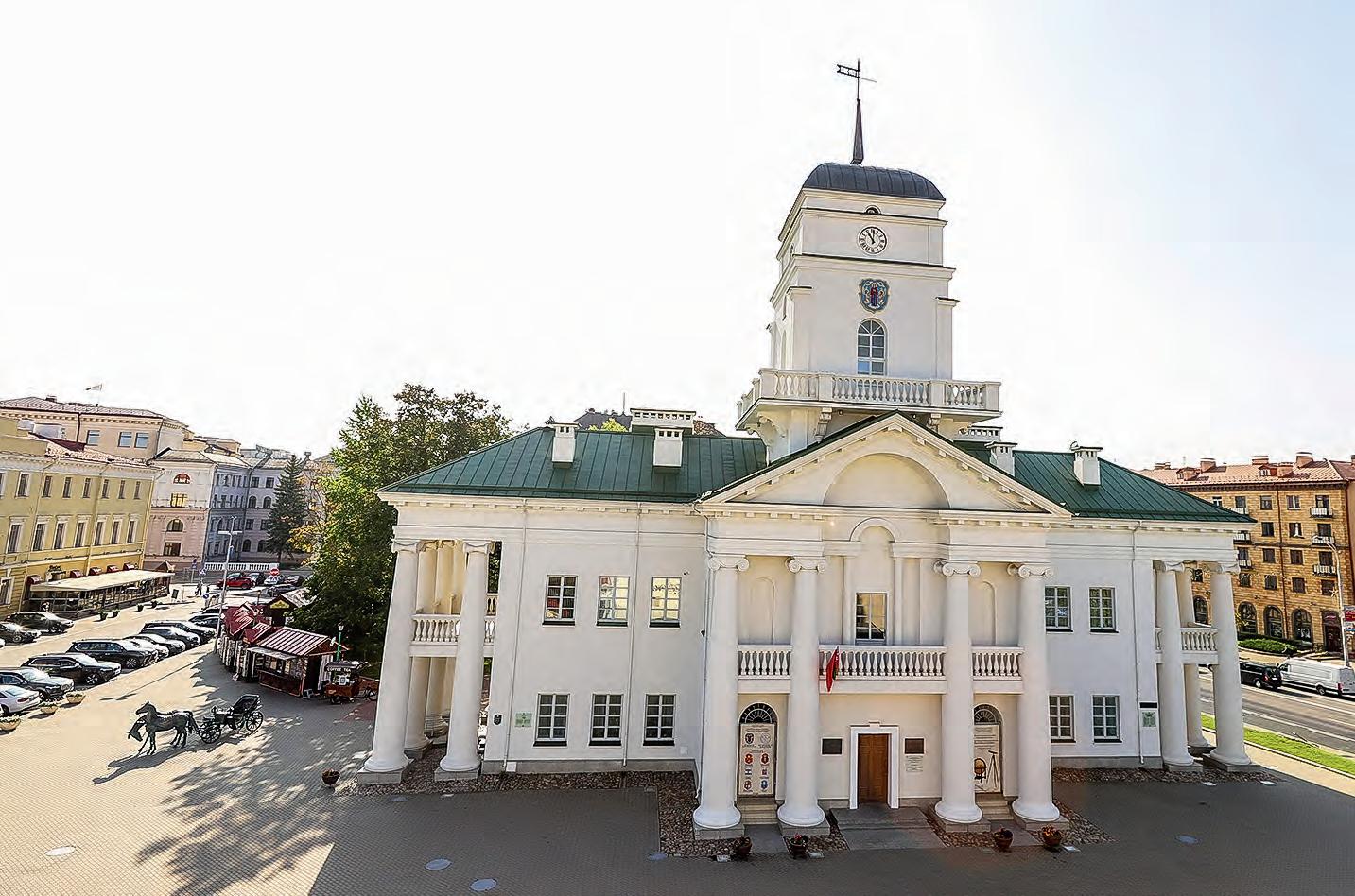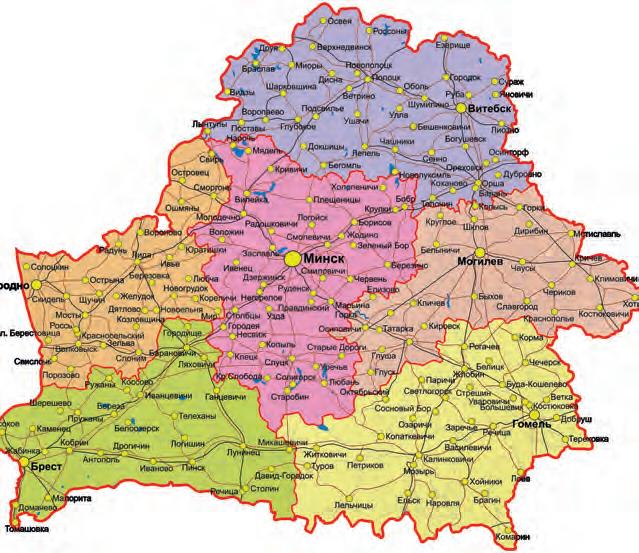IN SEARCH OF THE LOST
ARCHEOLOGY IS AN INDISPUTABLE THING The office of the research laboratory of archeology of the Mogilev State University named after A. Kuleshov is fully stocked with current finds. Mogilev archaeologists have accumulated as much as 70 kilograms of useful material. The tables are piled with small ceramic crocks, where local experts in some unknown way identify the bottoms, rings and even patterns of pots of the Iron Age. Discoveries are born here As I watch the eyes of the instructor and his students light up, I realize there are discoveries. First of all Alexey Avlasovich takes me to the table where the most valuable things found on the current excavation site, i. e. the settlement Ageyevka in the Mogilev Region, are situated. — This is the place where people used to live from the third century B. C. to the second century A. D. Generally, we were looking for items of the Iron Age, but suddenly came across burials of the 17th century, — says the historian. — The fortified settlement remained unoccupied since the 2nd up to the17th centuris and 15 centuries later our ancestors started to dig tombs there. We found human bones and ceramics every time. And so throughout the whole settlement. Nothing was left of the coffins but nails. A small cross was found on a baby, and clothes clasps were found in another grave. Valuable finds from the period of the Iron Age include a bronze jewellery for women and a spindle whorl. Archaeological excavations are always attended by first year students, but this year we had a lot of volunteers from other courses. Pavel Vasilyonok and Darya Logvinova, third year history teachers in training, took part in excavations not for the first time. — It is interesting to plunge into this life, to live in the field, — says Pavel. — I want to understand how it was there, in the past. — So we came here again to look at our findings, — adds Darya. — Gradually you start to distinguish, where there is a bottom, a wall, and a corolla of the pot. It is great. — There will be enough work for us till spring, — Alexey Avlasovich smiles. — Exactly here archeological discoveries are made. Some moments during excavations can be unclear. And if you lay out the material, each shard is examined, cleaned, then
38
БЕЛАРУСЬ. BELARUS 2021
much becomes clear. All of this will come in handy for our studies and scientific research.
They were looking for Slavs, and found ethnic population No written sources have survived on Ageyevka, so all hopes are set on archeologists. And they have already found out a lot. Ancient people lived in timbered houses with a gable roof, dug on average one meter into the ground. There was a stone hearth in the centre of the dwelling. It is known that the population was engaged in agriculture, also raised cattle for their needs. The main hope of the current expedition was not only to investigate the Iron Age settlement, but also to find traces of Slavs. For example, there are signs of their presence in the 5th century in Mogilev itself. This is the same Pelageyevka (Zmeyevka) near the Dubrovenka River in the city centre. The most striking difference between the Slavs is pottery. They had their own tradition of moulding and shaping pots — elongated, resembling a tulip bud with a slightly bent corolla. — Unfortunately, we could not find Slavs in Ageyevka, it was inhabited by an ethnic population, which can hardly be attributed to any ethnos. The bronze wire ornament that we found could have been an ethnic trait, or it could have been imported. These people used pots with a rough, coarse surface and a slightly bent corolla. There might have been a nail notch on the edge as decoration. These are signs of the Zarubinets culture, i. e. third century B. C., second century A. D. Our material confirmed the already existing tradition and overturned the theory that a more northern archaeological culture of hatched pottery reigned there. We were convinced that in the Mogilev Region, the greater influence was not hatching, but the Zarubinets












